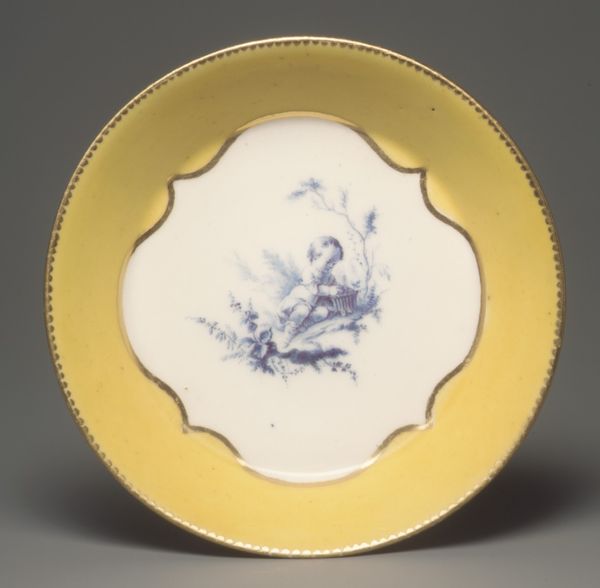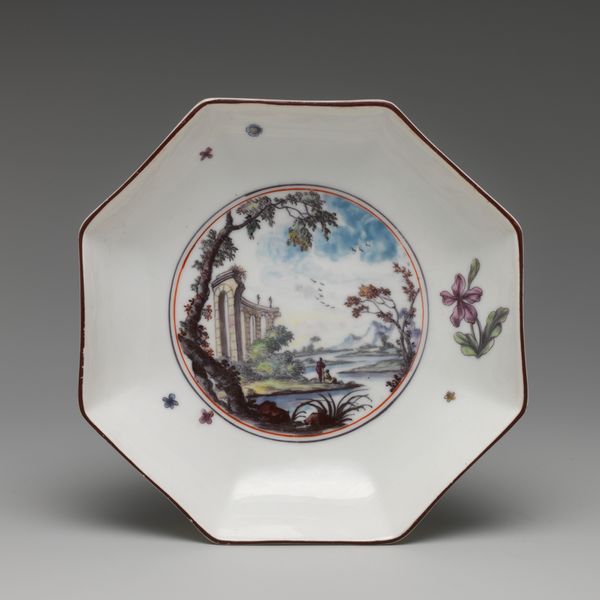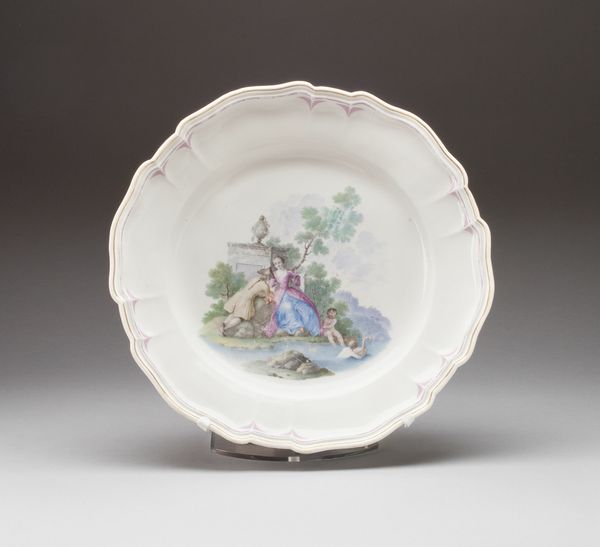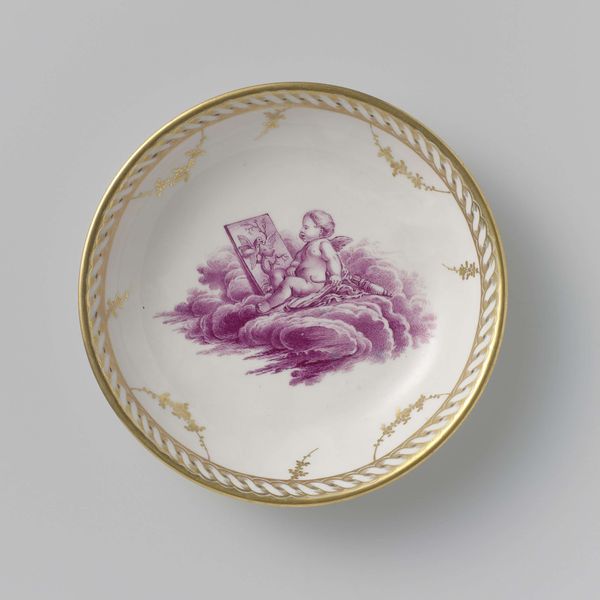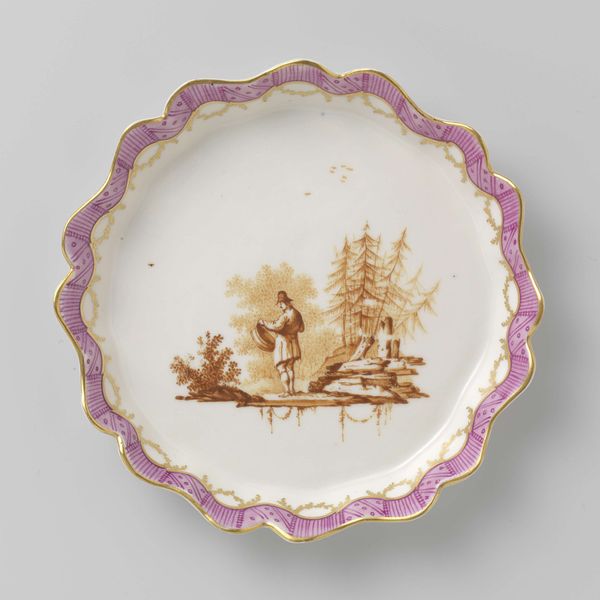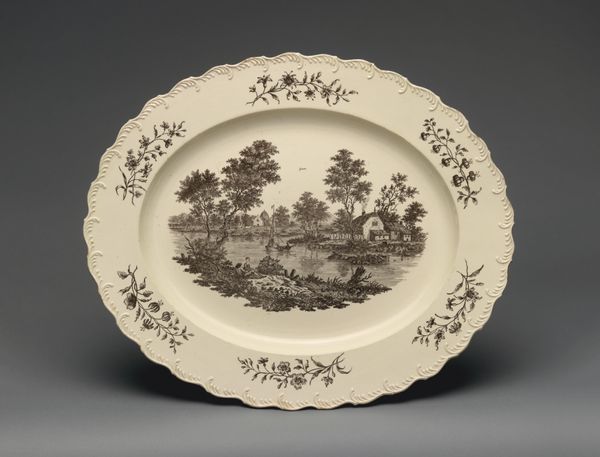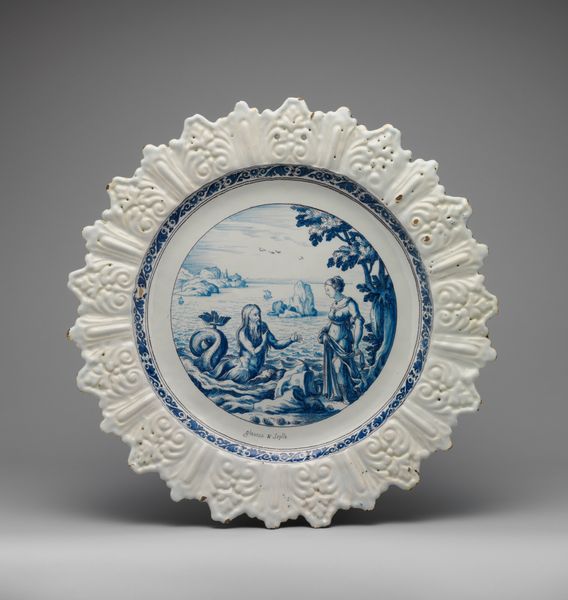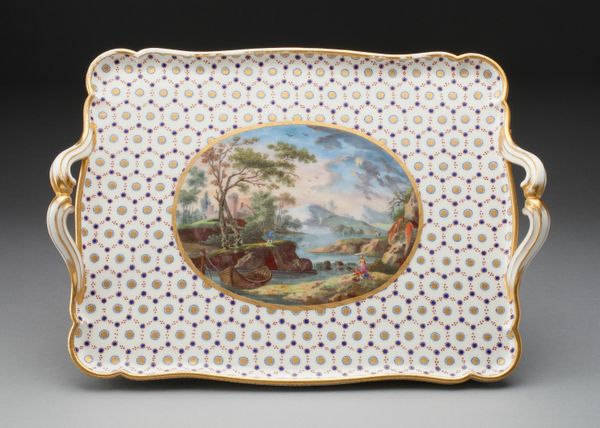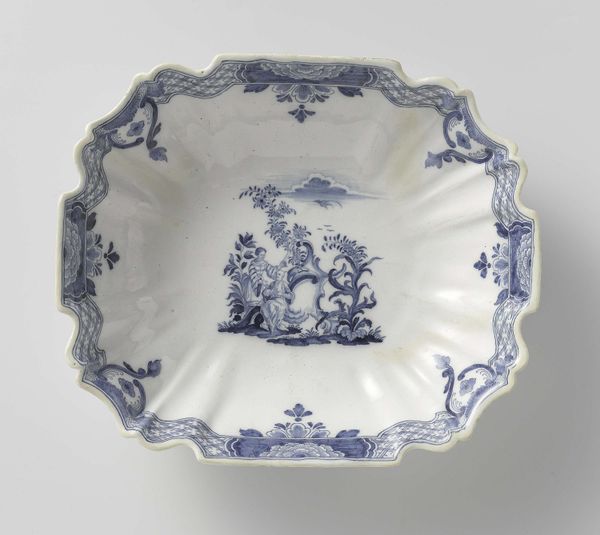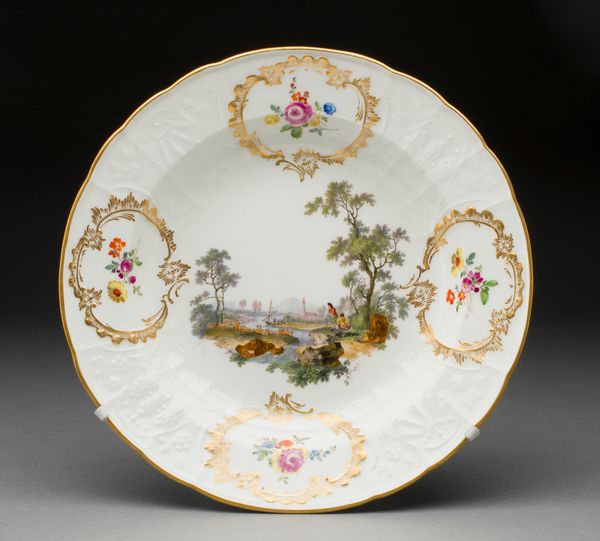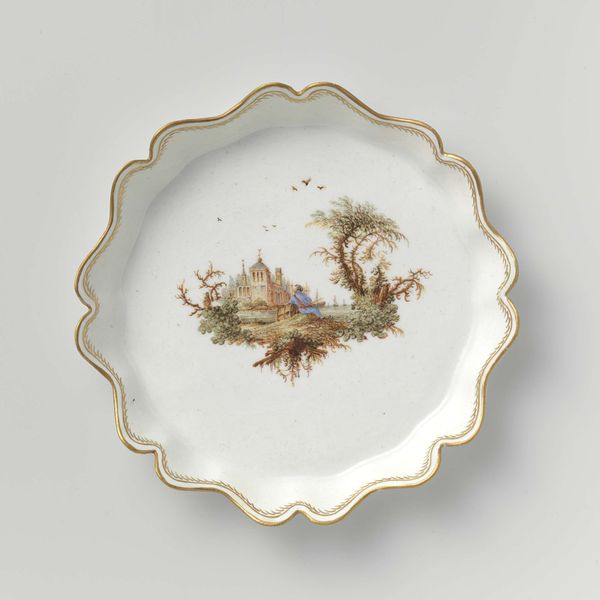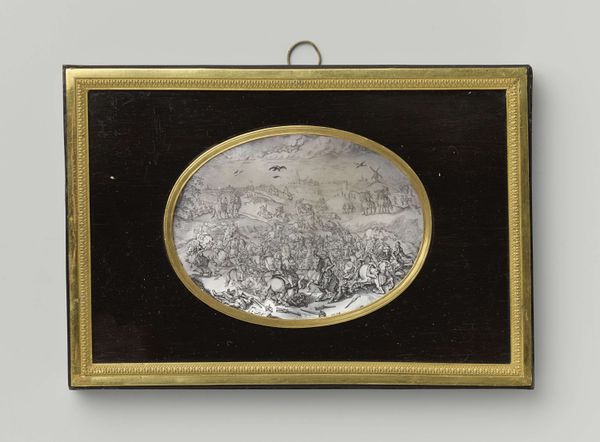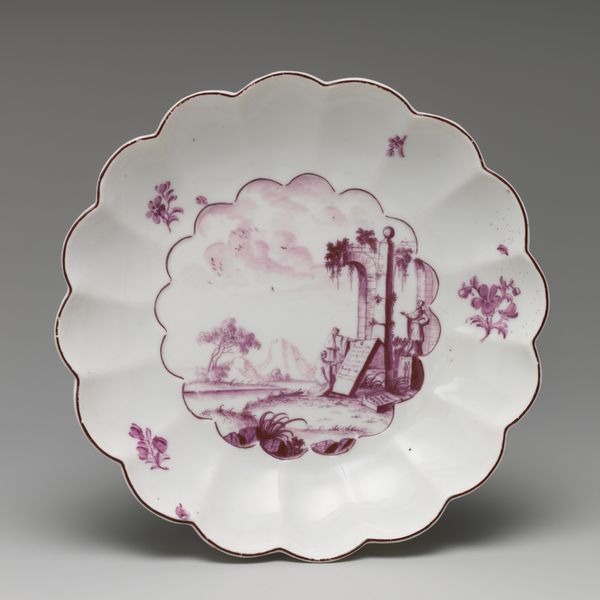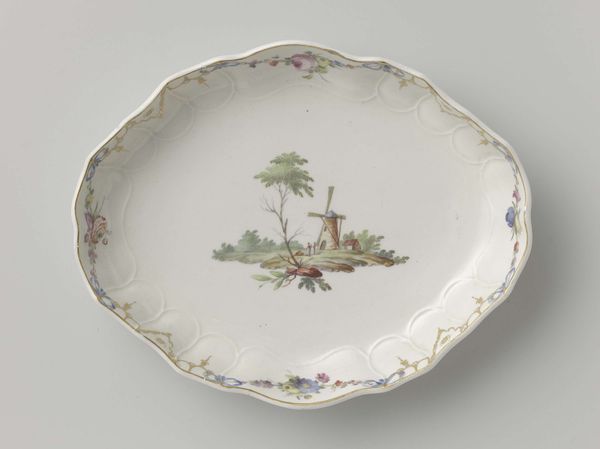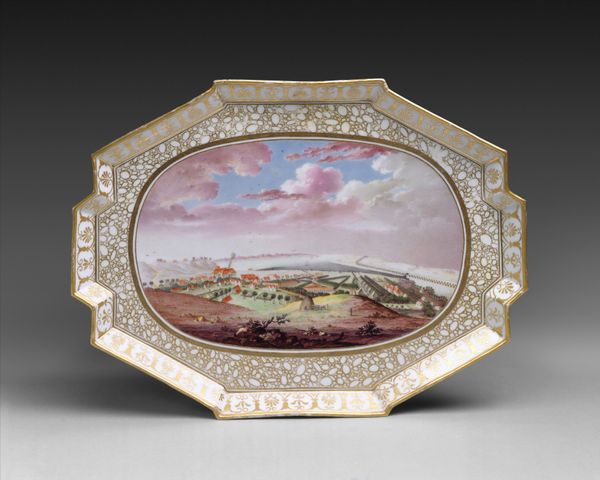
ceramic, porcelain
#
decorative element
#
ceramic
#
porcelain
#
ceramic
#
decorative-art
#
miniature
#
rococo
Dimensions: Overall: 1 1/16 × 4 1/4 × 4 1/4 in. (2.7 × 10.8 × 10.8 cm)
Copyright: Public Domain
Curator: This is a porcelain tray, titled "Plateau Carré," created at the Vincennes Manufactory between 1751 and 1761. Editor: My immediate impression is one of lightness and delicacy. The predominantly yellow color palette, framed with such elaborate gilding, certainly exudes luxury. Curator: Indeed. Notice how the square format contrasts with the organic, flowing Rococo embellishments, particularly in the gold detailing around the rim. The contrast gives the tray a somewhat organized structure. Editor: The central image, rendered in blue, is intriguing. I see what appears to be a pastoral scene—a sleeping animal, perhaps a sheep or goat, resting near some stylized foliage. These evoke familiar motifs of the idyllic countryside, suggesting a vision of harmony with nature. Curator: Precisely! The miniaturist rendering also presents a calculated tension between surface and representation. There's a tension, isn’t there, between the smooth, hard surface of the porcelain and the delicate rendering of space within the pictorial space? Editor: That use of blue echoes delftware traditions while also conforming to the elegant aesthetic of the period. Is it an allegory of rest, safety, the comfort found in retreat? Curator: Perhaps. And also notice the negative space! The pure, undecorated surface surrounding the miniature helps create an airy, open effect which complements the intricacy of the design and gold ornamentation along the edge. Editor: I find myself pondering the intended function. It’s clearly decorative, but did it truly serve as a tray, or more as a display of the owner's refined taste? The detail work would suggest the latter. Curator: One could argue its practical usage is secondary, as the object exists primarily as a demonstration of artistic skill and material extravagance. Editor: Considering its original context, it provides us with a view into the symbols and values embraced by the French aristocracy during this epoch. Curator: Yes, it’s a beautiful material encapsulation of a world driven by courtly life. Editor: Ultimately, what remains is a potent sense of serenity and elegance.
Comments
No comments
Be the first to comment and join the conversation on the ultimate creative platform.
